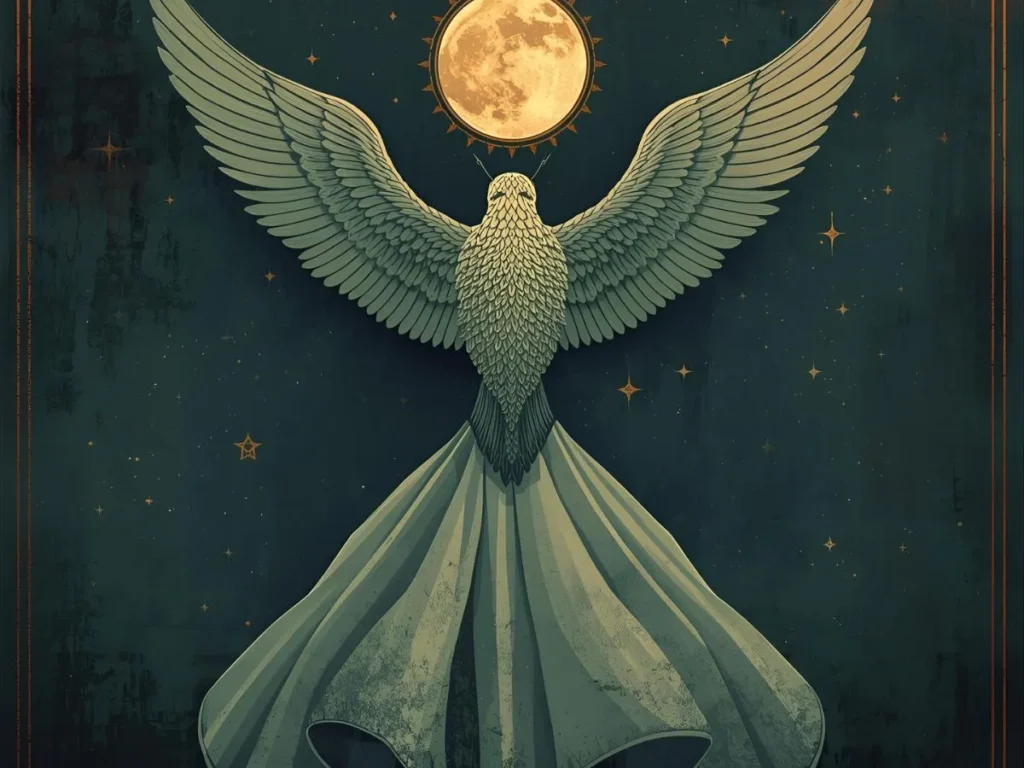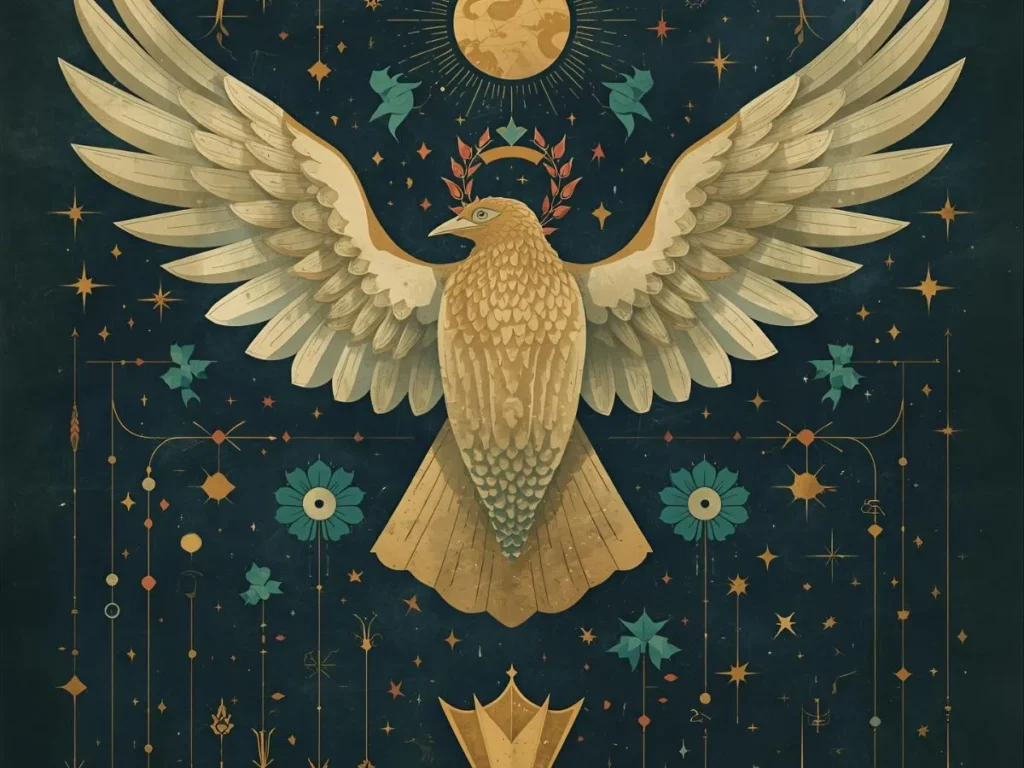When I was ten, I read Charlotte’s Web for the first time. I remember closing the book with tears streaming down my face.
Why did a story about a pig and a spider affect me so deeply? It wasn’t just the ending — it was the message behind the words. Charlotte, the spider, wasn’t just a spider
She was a symbol of loyalty, love, and quiet strength. That’s when I first discovered symbolism in literature — a secret language that stories use to speak to the soul.
Just like animals in nature show up in our lives with spiritual meaning, symbols in stories carry deeper emotional and spiritual truths. Whether it’s a mockingbird in To Kill a Mockingbird, a green light in The Great Gatsby, or a red rose in a poem, symbols can awaken something deep within us — reminding us of loss, hope, or the power of transformation.
Let’s explore what symbolism in literature really means — and how understanding it can bring us closer to ourselves, our emotions, and the unseen messages all around us.
An Example of Symbolism in Literature

Symbolism in literature happens when a writer uses an object, character, or action to represent something more than its literal meaning.
Think of it like a secret code — a way to say something powerful without directly naming it.
Let’s take a classic example of symbolism in literature: the green light in The Great Gatsby by F. Scott Fitzgerald. On the surface, it’s just a light at the end of Daisy’s dock.
But to Gatsby, it means so much more — his dream, his hope, his longing for the past. That tiny green glow becomes a symbol of yearning, illusion, and the unreachable.
Another well-known example is the conch shell in Lord of the Flies. It represents order, civilization, and voice.
When the conch is respected, the boys try to live with rules. But when it breaks, chaos takes over — showing how thin the line is between structure and savagery.
These are just two powerful examples, but almost every great story hides a symbol — waiting for us to discover its deeper meaning.
What Is an Example of Symbolism in Literature?
To put it simply, an example of symbolism in literature is when something in a story stands for more than just what it is.
Let’s break it down with a few familiar examples:
- A mockingbird in To Kill a Mockingbird = Innocence and goodness.
- Fire in Fahrenheit 451 = Both destruction and rebirth.
- The scarlet letter “A” in The Scarlet Letter = Shame, identity, and judgment.
Writers don’t always come out and explain their symbols — they let us feel them. That’s what makes reading so magical. You’re not just seeing words. You’re feeling emotions hidden underneath the story.
So next time you read and notice a recurring object, animal, or color… pause. Ask yourself: “What might this really mean?” That’s the start of your journey into symbolism.
Give an Example of Symbolism in Literature

Still wondering? Let’s give an example of symbolism in literature from something more recent.
In Harry Potter, the phoenix Fawkes is a symbol of healing, hope, and rebirth.
Every time he burns, he’s reborn from the ashes — much like how people can rise again after suffering.
The phoenix reminds us that even after deep loss, there’s always a chance to begin again.
That’s the power of symbolism. It speaks to our own life stories.
Example of Symbolism in Literature?
Let’s look at a poetic one.
In Robert Frost’s The Road Not Taken, the two roads in the woods aren’t just paths — they symbolize choices in life.
The poem becomes a reflection on how the roads we choose shape who we are. “I took the one less traveled by, and that has made all the difference,” he writes.
That’s not about hiking. It’s about courage, independence, and destiny.
So when someone asks, “Example of symbolism in literature?”, you can share that poem. It’s short, but deeply moving.
Example of Symbolism in Literature Sentence
Here’s a simple example of symbolism in a literature sentence:
“The raven perched on the windowsill, staring with eyes as dark as midnight.”
In this sentence, the raven isn’t just a bird. It might symbolize death, mystery, or bad omens — especially if the story has a dark or suspenseful tone.
Writers use these small clues to stir our emotions — sometimes without us even noticing at first.
But when we catch them, the story suddenly feels richer and more meaningful.
Which of the Following Is an Example of Symbolism in Literature?
Imagine this multiple-choice question:
Which of the following is an example of symbolism in literature?
A. A character eating lunch
B. A rose wilting on a grave
C. A car honking in traffic
D. A phone ringing loudly
✅ The answer is B. A rose wilting on a grave.
Why? Because the rose represents love, loss, and passing time. It’s not just a flower — it symbolizes the sadness of goodbye and the beauty of a love that once bloomed.
The others are just literal actions. But symbolism goes deeper — it adds emotion, layers, and spiritual meaning.
What Is an Example of Symbolism in Literature?
Let’s go over this question again with fresh clarity:
What is an example of symbolism in literature?
A great one is the whale in Moby-Dick by Herman Melville.
The whale is more than just a creature — it symbolizes the unknown, obsession, and even God.
Captain Ahab’s hunt isn’t just about catching a whale. It’s about wrestling with fate, fear, and meaning.
That’s how a good symbol works — it turns a simple story into a spiritual search.
What’s an Example of Symbolism in Literature

Let’s rephrase it one last time:
What’s an example of symbolism in literature?
Here’s a soft and spiritual one: In Of Mice and Men, Lennie’s puppy is a symbol of innocence and fragility.
Lennie’s love for the puppy — and its fate — mirrors his own place in a harsh world.
This kind of symbolism breaks our hearts gently, reminding us of how delicate some souls are in a world not built for them.
Real-Life Short Scenarios
1. A Butterfly at a Funeral
A woman stands at her mother’s funeral, tears falling silently. Suddenly, a butterfly lands on the casket. She gasps. In that moment, the butterfly feels like a message — a symbol of transformation, of the soul’s journey, of life after death.
Literature often uses butterflies the same way. In The Metamorphosis, the change from human to insect becomes a symbol of emotional isolation. In life and literature, the butterfly whispers: “Change is painful, but it leads to light.”
2. A Candle Flickering in a Storm
A teenager prays during a power outage, the only light a tiny candle on the table. The storm rages outside. Yet the flame holds steady.
That flame? It symbolizes hope. Just like in stories where a candle in the dark means faith or resilience, this moment reminds us that even when all feels lost, one small light can guide the way.
3. A Lost Dog Returns
After days of worry, a family finds their missing dog waiting on the porch at sunrise. To them, it’s not just a reunion. It’s a symbol of home, loyalty, and answered prayers.
In literature, dogs often symbolize unconditional love. Whether in The Odyssey (Argos waiting for Odysseus) or in modern tales, they carry deep spiritual meaning.
FAQs
1. Why do authors use symbolism in literature?
Authors use symbolism to add depth and emotion to their stories. It allows readers to connect with hidden meanings and reflect on their own lives.
2. Can animals be symbols in literature?
Yes! Animals are powerful symbols. For example, owls often represent wisdom, while snakes may symbolize danger or rebirth.
3. How can I recognize symbolism when I read?
Look for repeated images, objects with emotional weight, or strange details that stand out. Ask yourself, “What could this mean beyond the surface?”
4. Is symbolism always intentional?
Often, yes — but not always. Sometimes, symbols appear through the reader’s personal interpretation, and that’s okay. What matters is how it moves you.
5. Can symbolism have spiritual meaning?
Absolutely. Many symbols tap into universal truths, like love, loss, rebirth, or connection to nature and spirit. They speak to the soul.
Conclusion:
Reading becomes so much more than just following a plot when we start to see the symbols hidden in plain sight. Just like real-life encounters with animals can carry emotional and spiritual messages, literature offers gentle signs meant to guide us inward.
A bird. A flame. A tree in the wind. These aren’t just parts of the background. They are whispers of meaning. When you learn to spot them, you also learn to listen to your own life more deeply.
So next time you read and feel something stir inside you — pause. Ask yourself what that symbol is trying to say. It might be pointing you toward healing, growth, or understanding.
Because every great story has a soul. And symbols are how that soul speaks.




